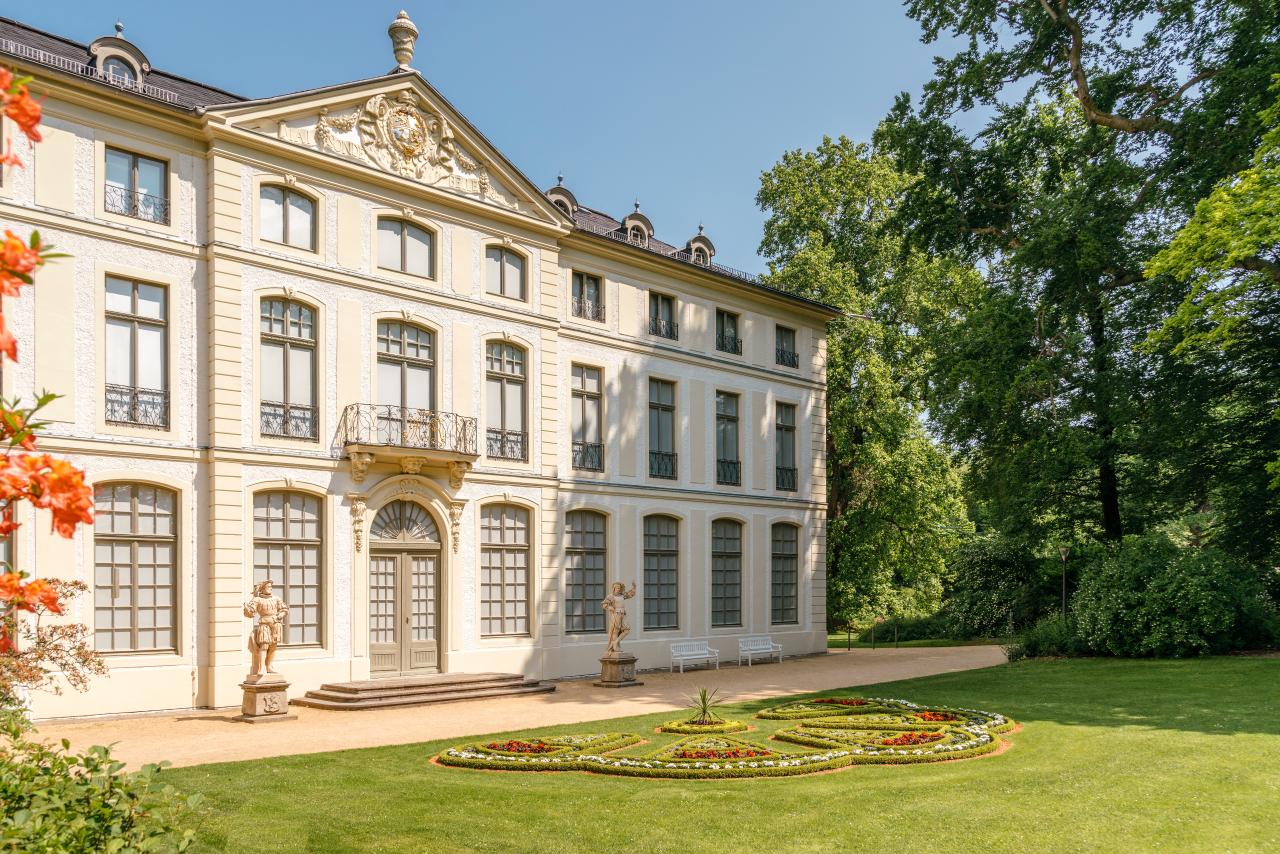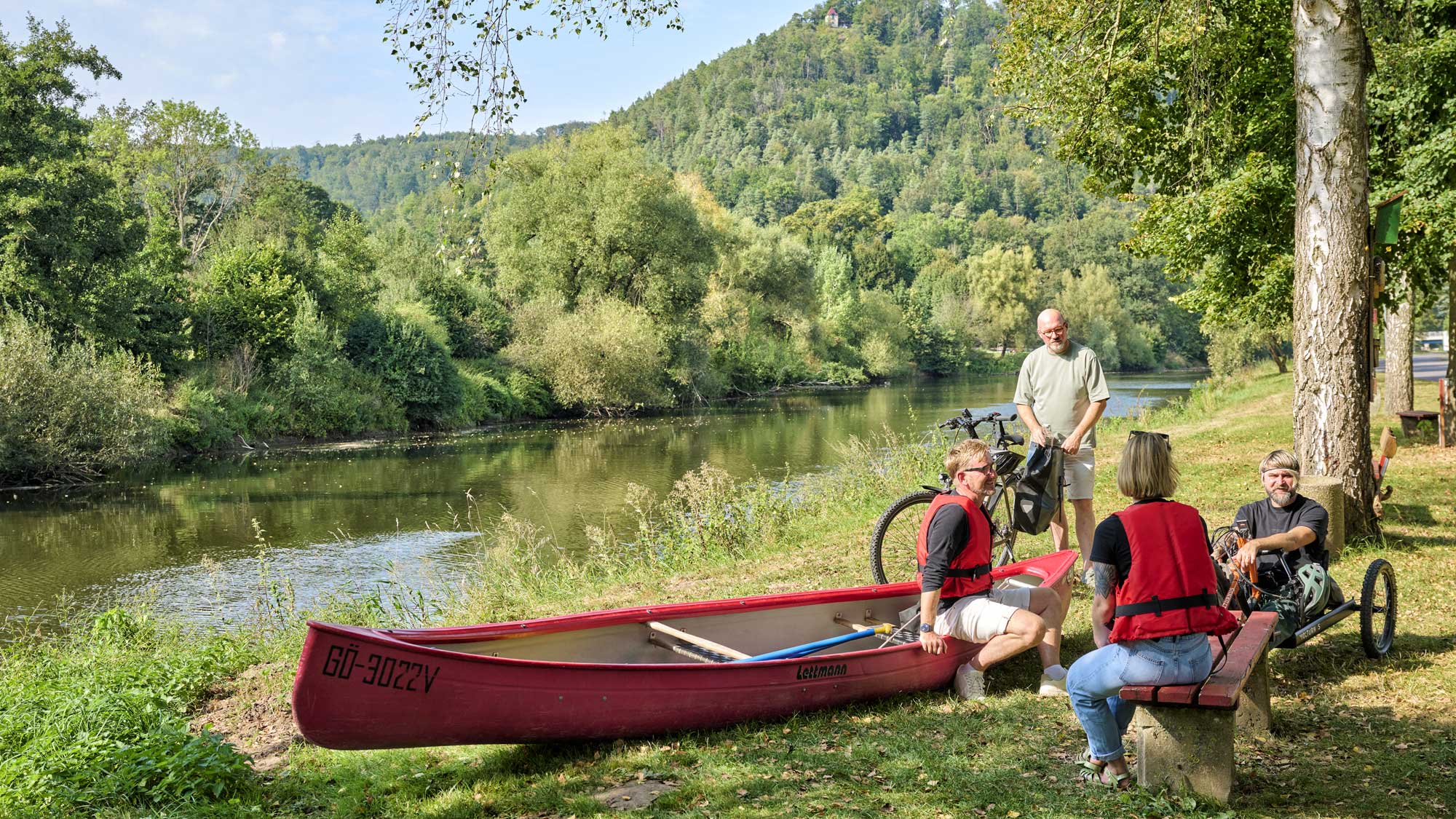You're in the right place! Whether in nature, in the middle of the city, for families, in the countryside, historic or traditional: among Thuringia's TOP hosts, everyone will find exactly the right address.
Glorious Greiz
Greiz Summer Palace and Royal Greiz Park
A clock is growing between the banks of the White Elster river and the greenhouse. A round bed has been planted with flowers in the shape of numbers, and two hands circle around them. You can even hear the mechanical clockwork ticking. But you won’t be losing too much time here as the flower clock from 1954 is merely one eye-catching feature in Royal Greiz Park (Fürstlich Greizer Park). With a tree population unlike anywhere else, wonderful sight lines and historical highlights such as the Seufzerallee, one of the oldest lime tree avenues in Germany, the extensive grounds in Greiz in south-east Thuringia are full of charm and wonderful discoveries.
Summer Palace and pleasure garden
The park grew out of a small kitchen garden of the Obergreiz estate in around 1650. A pleasure garden was commissioned by Heinrich XI in 1743 and created following the principles of baroque garden design. The newer part of the Summer Palace was completed in around 1769. The summer residence is one of the earliest neoclassical buildings in central Germany and today houses the state collection of books and copper engravings. In 1799, the White Elster river burst its banks and destroyed the park. Following this catastrophe – of which there have been several, with the most recent major flood in 2013 – the park was gradually transformed into a landscape garden in the English style.

Summer palace in Greiz ©Marcus Glahn, Schatzkammer Thüringen
In 1872, renowned landscape architect Carl Eduard Petzold from Bad Muskau was commissioned to work on the garden. Petzold’s ideas were implemented by Rudolph Reinecken, who also added some of his own. He opted for a smaller-scale layout and a greater botanical diversity of plant species, colours and shapes, creating a landscape that skilfully incorporates the surrounding hills and, thanks to cleverly placed accents, guides the eye through the park in a captivating way.
The town of Greiz in Thuringia used to be the capital of Germany’s smallest principality, the Principality of the Reuss Elder Line. Greiz looks back on more than 800 years of exciting and turbulent history, one of progress and prosperity but also many a tragedy.
A park and nature conservation area
One of the most beautiful views is to the White Cross, which Heinrich XX created for his wife Sophie, who died at an early age. Rising twelve metres towards the sky above Hirschstein hill, it is located at the end of the longest line of sight and acts as a visual marker on the park’s northern boundary. Other highlights are the Pinetum with its collection of unusual trees such as dawn redwood, European spruce ‘Virgata’, Nootka cypress and noble fir, and the large lake with a natural shoreline that creates an interesting shape.
The area of the park furthest from the palace is now a nature conservation area and home to a very special butterfly, the Dusky Large Blue. It lays its eggs in the flowers of great burnet, from where the caterpillars drop in autumn. Here they trick ants into taking them to their nest in order to feed. The park is also home to rare wild orchids, and the population of broad-leaved marsh orchids, for example, is one of the largest in the area. Greiz Park is more than a masterpiece of garden design, it is also a fascinating biosphere.
Summer palace in Greiz ©Jens Hauspurg, Thüringer Tourismus GmbH
Did you like this story?
Maybe, you'll like this too ...
















